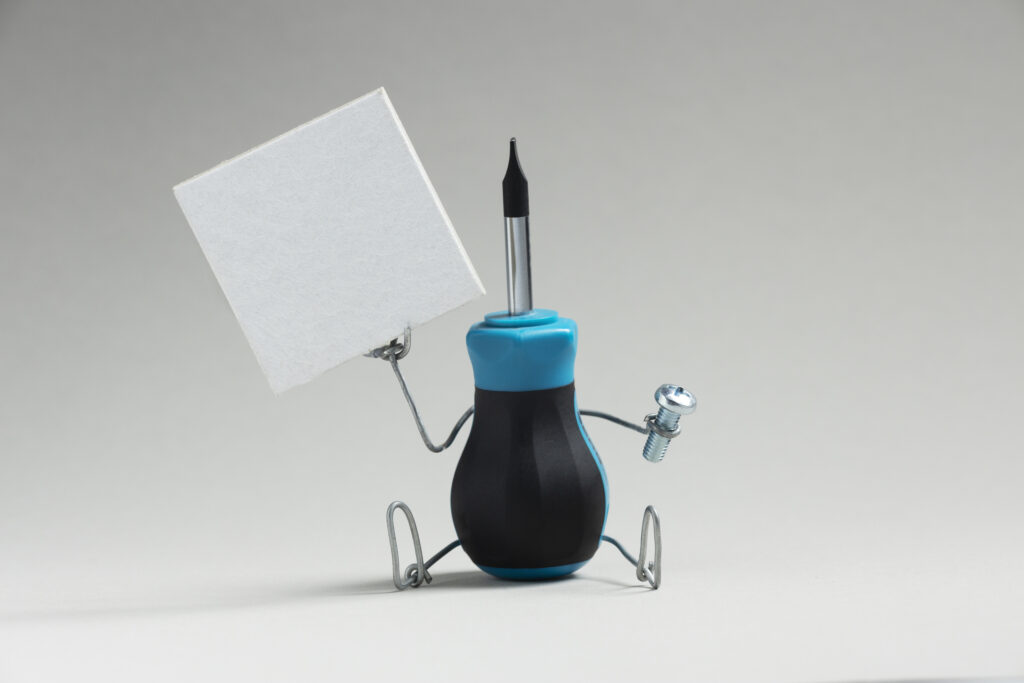

Welcome to the enchanting world of essay hooks, where words have the power to captivate, intrigue, and inspire. Let’s embark on a journey together, unraveling the secrets of these literary gems that transform ordinary essays into extraordinary adventures.
Picture yourself at a grand storytelling festival, where masterful narrators weave tales that transport you to distant lands and stir your soul. An essay hook is akin to that mesmerizing storyteller—it’s the opening line that grabs your attention and compels you to keep reading. In essence, it’s the magical spell that ensnares hearts and minds, inviting readers into the writer’s world.
Think of a hook as the sparkling overture to a symphony—it sets the tone, ignites curiosity, and promises an unforgettable journey ahead. Without a compelling hook, an essay risks fading into the background noise of countless others. But with a strong hook, it becomes a beacon of light in the vast sea of words, guiding readers on an exhilarating quest for knowledge and discovery.
Just as artists wield brushes to paint masterpieces, writers harness different types of hooks to craft unforgettable introductions. From the warmth of personal anecdotes to the intrigue of thought provoking questions, each hook offers a unique flavor that tantalizes the senses and leaves a lasting impression.
The Power of Storytelling: Anecdotal hooks are like windows to the soul of your essay—they transport readers to vivid landscapes populated by intriguing characters and compelling narratives.
Embracing Emotions: Anecdotes tap into the rich tapestry of human emotions, evoking laughter, tears, and everything in between. They forge connections that transcend mere words, immersing readers in a shared experience.
Crafting Compelling Narratives: Anecdotal hooks weave tales of wonder, drawing readers into a world of imagination and possibility. They set the stage for exploration, inviting readers on a journey of discovery.
Example:
“As the first rays of dawn kissed the dew kissed petals of the cherry blossoms, I found myself standing at the crossroads of possibility. It was a moment of quiet revelation, a glimpse into the infinite tapestry of existence that stretched out before me.”
This anecdotal hook transports readers to a realm of beauty and contemplation, setting the stage for an essay exploring the transformative power of nature.

Illuminate with Numbers: Statistical hooks are like beacons in the darkness, illuminating the path ahead with hard facts and irrefutable evidence.
Adding Depth: Statistics lend credibility to your arguments, anchoring them in the solid bedrock of research and data. They provide a foundation upon which your ideas can flourish and grow.
Stirring Curiosity: Statistical hooks arouse curiosity, prompting readers to delve deeper into the topic and uncover hidden truths. They challenge assumptions and invite exploration, fostering a spirit of inquiry and discovery.
Example:
“Did you know that over 90% of all communication is nonverbal? This staggering statistic sheds light on the subtle nuances of human interaction, from the flicker of a smile to the arch of an eyebrow.”
This statistical hook invites readers to ponder the complexities of human communication, setting the stage for an essay exploring the art of connection and understanding.
Whispers of the Past: Quotation hooks echo the voices of history’s greatest minds, offering pearls of wisdom that resonate across time and space.
Stirring the Soul: Quotes have the power to stir emotions and ignite passions, kindling flames of inspiration in the hearts of readers. They breathe life into your writing, infusing it with depth and resonance.
Inviting Reflection: Quotation hooks invite readers to pause and reflect, pondering the timeless truths encapsulated in a few short words. They spark conversations, spark imaginations, and spark change.
Example:
“In the words of Albert Einstein, ‘Imagination is more important than knowledge.’ These profound words remind us that the power of creativity lies at the heart of human progress, propelling us ever forward on the journey of discovery.”
This quotation hook invites readers to explore the boundless realms of imagination, setting the stage for an essay celebrating the transformative power of creativity.
Provoking Thought: Rhetorical questions are like pebbles tossed into the pond of your essay—they create ripples of thought that expand and grow, sparking curiosity and inviting exploration.
Engaging the Mind: Rhetorical questions engage the reader’s mind, encouraging active participation and critical thinking. They challenge assumptions and invite dialogue, fostering a deeper understanding of the topic at hand.
Stirring the Imagination: Rhetorical questions ignite the fires of imagination, inviting readers to dream, wonder, and speculate. They open doors to new possibilities, encouraging readers to embark on a journey of discovery.
Example:
“What if the stars were but fireflies dancing in the night sky, weaving tales of love and adventure with each graceful twirl? This whimsical question invites readers to gaze upon the heavens with fresh eyes, pondering the mysteries that lie beyond.”
This rhetorical question hook invites readers to embark on a celestial journey of wonder and imagination, setting the stage for an essay exploring the wonders of the cosmos.

In the vast tapestry of storytelling, anecdotes are the threads that bind readers to the narrative, infusing essays with warmth, authenticity, and relatability. Let’s explore the art of crafting compelling anecdotal hooks that transport readers to worlds of wonder and leave a lasting imprint on their hearts and minds.
Mining Your Memories: The first step in crafting an anecdotal hook is to delve into your own experiences and unearth moments that resonate deeply with your essay’s theme. Whether it’s a childhood memory, a transformative event, or a poignant encounter, personal anecdotes offer a window into your soul.
Finding the Narrative Arc: Once you’ve unearthed a treasure trove of memories, it’s time to shape them into a cohesive narrative arc. Consider the elements of storytelling—beginning, middle, and end—and weave your anecdotes into a compelling tale that unfolds with dramatic flair.
Infusing Emotion: The heart of any anecdotal hook lies in its emotional resonance. Tap into the rich tapestry of human emotions—joy, sorrow, fear, love—and infuse your anecdotes with raw authenticity. By sharing your vulnerabilities and triumphs, you invite readers to empathize with your journey and connect on a deeper level.
Example:
“As I stood on the cusp of adulthood, my mind awash with dreams of the future, I found myself at a crossroads—a moment of uncertainty and possibility. It was a crisp autumn evening, the air heavy with the scent of fallen leaves and anticipation. With each step forward, I felt the weight of the world on my shoulders, yet beneath the surface, a flicker of hope burned bright. Little did I know that this moment would shape the course of my journey, setting me on a path of selfdiscovery and transformation.”
This anecdotal hook draws readers into the writer’s world, inviting them to share in the introspective journey of selfdiscovery and growth.
Show, Don’t Tell: When it comes to conveying emotions in your anecdotes, remember the golden rule of storytelling—show, don’t tell. Instead of simply stating how you felt, paint a vivid picture with words, allowing readers to experience the emotions firsthand.
Harnessing Descriptive Language: Dive into the rich palette of descriptive language—metaphors, similes, sensory details—and paint a vivid portrait of your emotional landscape. Describe the sights, sounds, smells, tastes, and textures that surrounded you, immersing readers in the sensory tapestry of your experience.
Honoring Authenticity: Authenticity is the lifeblood of effective storytelling. Don’t be afraid to embrace vulnerability and share your innermost thoughts and feelings. By baring your soul on the page, you invite readers to connect with your humanity and forge genuine emotional bonds.
Example:
“As I gazed upon the sunkissed horizon, a sense of awe washed over me—a kaleidoscope of emotions swirling within my chest. In that fleeting moment, I felt the weight of the world lift from my shoulders, replaced by a profound sense of peace and belonging. It was as if the universe itself had whispered secrets of love and acceptance, wrapping me in its warm embrace.“
This anecdotal hook immerses readers in a world of wonder and introspection, inviting them to share in the writer’s profound emotional experience.
Seamless Transitions: The key to a compelling anecdotal hook lies in its seamless integration into the larger narrative flow of your essay. Transition smoothly from your anecdote to the central thesis of your essay, ensuring that each element serves to advance the overarching narrative.
Maintaining Cohesion: As you craft your anecdotal hook, keep the broader context of your essay in mind. Ensure that your anecdote aligns with the themes and motifs that you plan to explore in the subsequent sections, maintaining cohesion and continuity throughout your writing.
Inviting Exploration: Anecdotal hooks serve as invitations to embark on a journey of discovery—a tantalizing glimpse into the world that awaits readers. Leave breadcrumbs of intrigue along the path, hinting at the wonders that lie ahead and enticing readers to follow where your words may lead.
Example:
“In the hush of twilight, as shadows danced upon the walls and whispers of the past echoed in the air, I found myself lost in reverie—a solitary voyager adrift in a sea of memory. It was a moment suspended in time, a tableau of nostalgia and longing that beckoned me to explore the labyrinthine corridors of my mind. And so, with pen in hand and heart laid bare, I set forth on a journey of selfdiscovery—a quest to unearth the truths that lay hidden within the recesses of my soul.”
This anecdotal hook sets the stage for a reflective essay journey, inviting readers to join the writer on a voyage of introspection and selfdiscovery.

In a world inundated with information, statistics stand out as beacons of truth, illuminating complex issues with clarity and precision. Let’s explore how to harness the power of statistical hooks to captivate readers, bolster arguments, and lend credibility to your essays.
Identifying Reliable Sources: Begin your journey by scouring reputable sources for statistics relevant to your essay topic. Look to peerreviewed journals, government websites, and academic publications for data that is current, accurate, and trustworthy.
Contextualizing the Numbers: Once you’ve gathered a treasure trove of statistics, take the time to contextualize them within the broader narrative of your essay. Provide background information, offer insights into the methodology behind the data collection, and highlight any relevant trends or patterns.
Ensuring Relevance: Not all statistics are created equal. Choose data points that directly support your argument or thesis statement, ensuring that they align with the central themes and motifs of your essay. Avoid cherrypicking statistics or manipulating data to fit a preconceived narrative, as this can undermine the credibility of your writing.
Example:
“According to a recent study published in the Journal of Environmental Psychology, exposure to green spaces has been linked to significant improvements in mental health and wellbeing. Researchers found that individuals who spent time in nature reported lower levels of stress, anxiety, and depression, suggesting that access to green spaces plays a crucial role in promoting psychological resilience and overall happiness.“
This statistical hook draws readers’ attention to the transformative power of nature, setting the stage for an essay exploring the connections between environment and mental health.
Weaving Statistics into the Narrative: As you incorporate statistics into your essay, strive for seamless integration with the broader narrative flow. Avoid presenting data in isolation; instead, weave it into the fabric of your writing, using it to bolster your arguments and provide empirical evidence for your claims.
Highlighting Significance: When introducing statistics, take the time to emphasize their significance and relevance to your essay topic. Explain why this data is important, how it supports your argument, and what implications it has for your readers. By providing context and analysis, you help readers understand the broader implications of the statistics you present.
Encouraging Critical Thinking: Statistics should serve as springboards for further inquiry and exploration, sparking readers’ curiosity and prompting them to delve deeper into the topic. Encourage critical thinking by posing questions, challenging assumptions, and inviting readers to consider the implications of the data presented.
Example:
“The findings of this study shed light on the profound impact of green spaces on mental health, underscoring the importance of urban planning initiatives that prioritize access to nature. By incorporating parks, gardens, and other green spaces into urban environments, policymakers can create healthier, happier communities where residents can thrive.”
This integration of statistics into the narrative highlights the practical implications of the research findings, inviting readers to consider the role of green spaces in fostering wellbeing.
In the vast tapestry of human experience, words have the power to inspire, provoke, and transform. Let’s explore the art of crafting quotation hooks that captivate readers, spark conversations, and infuse your essays with wisdom and insight.
Exploring Literary Works: Begin your quest for the perfect quotation by delving into the vast expanse of literature, poetry, and philosophy. Seek out quotes that resonate with your essay topic, capturing its essence with eloquence and grace.
Considering the Source: When selecting quotes, pay close attention to the context in which they were written and the individuals who penned them. Consider the author’s background, beliefs, and motivations, as well as the historical and cultural context in which the quote was uttered.
Providing Context
: As you introduce your chosen quote, take the time to provide context for your readers. Offer insights into the author’s life and work, explain the significance of the quote within the broader scope of their oeuvre, and elucidate its relevance to your essay topic.
Example:
“In the words of Henry David Thoreau, ‘I went to the woods because I wished to live deliberately, to front only the essential facts of life, and see if I could not learn what it had to teach, and not, when I came to die, discover that I had not lived.’ These timeless words encapsulate the essence of Thoreau’s philosophy—a celebration of simplicity, selfreliance, and the transformative power of nature.”
This quotation hook invites readers to ponder the profound insights of Thoreau’s philosophy, setting the stage for an essay exploring the timeless themes of simplicity and selfdiscovery.
Unpacking Layers of Meaning: As you delve into your chosen quote, take the time to unpack its layers of meaning and explore its nuances. Consider the imagery, symbolism, and rhetorical devices employed by the author, as well as the thematic connections to your essay topic.
Drawing Parallels: Look for parallels between the quote and your own experiences or observations. How does the wisdom contained within the quote resonate with your own understanding of the world? What insights does it offer into the human condition?
Encouraging Dialogue: Quotes serve as catalysts for conversation, sparking discussions that transcend time and space. Invite readers to engage with the quote, offering their own interpretations, reflections, and critiques. By fostering dialogue, you create a dynamic exchange of ideas that enriches the reading experience for everyone involved.
Example:
“Thoreau’s words invite us to reconsider our relationship with the natural world, challenging the notion that progress is synonymous with material accumulation and technological advancement. Instead, he offers a vision of simplicity and harmony, where the essentials of life take precedence over the trappings of modernity. In an age marked by consumerism and environmental degradation, Thoreau’s philosophy serves as a poignant reminder of the importance of reconnecting with the rhythms of nature and embracing a more sustainable way of living.”
This analysis of Thoreau’s quote highlights its relevance to contemporary issues and invites readers to consider its implications for their own lives.
In the grand symphony of language, rhetorical questions stand out as melodies of inquiry, inviting readers to ponder the mysteries of existence and explore the depths of their own consciousness. Let’s explore the art of crafting rhetorical question hooks that intrigue, provoke, and inspire.

Piquing Curiosity: The key to a compelling rhetorical question hook lies in its ability to pique readers’ curiosity and prompt them to ponder the deeper implications of your essay topic. Choose questions that challenge assumptions, provoke thought, and invite readers to explore new perspectives.
Exploring Universal Themes: Look for questions that resonate with universal themes and existential dilemmas—questions that tap into the shared human experience and transcend cultural and temporal boundaries. Whether probing the nature of reality, the meaning of life, or the mysteries of the cosmos, aim to spark conversations that transcend the limits of language and logic.
Encouraging SelfReflection: Rhetorical questions serve as mirrors that reflect the reader’s own thoughts, feelings, and beliefs. By posing questions that touch upon fundamental truths and existential mysteries, you invite readers to embark on a journey of selfdiscovery and introspection.
Example:
“What if the stars were but fireflies dancing in the night sky, weaving tales of love and adventure with each graceful twirl? This whimsical question invites readers to gaze upon the heavens with fresh eyes, pondering the mysteries that lie beyond.”
This rhetorical question hook invites readers to embark on a celestial journey of wonder and imagination, setting the stage for an essay exploring the wonders of the cosmos.
Stirring Curiosity: As you introduce your rhetorical question hook, strive to stir readers’ curiosity and capture their attention from the very first sentence. Pose questions that challenge conventional wisdom, defy expectations, and invite readers to reconsider their preconceived notions.
Inviting Engagement: Rhetorical questions are not meant to be answered outright; rather, they serve as invitations to explore the deeper layers of meaning hidden beneath the surface. Encourage readers to ponder the implications of the question, offering their own interpretations and insights along the way.
Advancing the Narrative: Rhetorical questions should serve as springboards for further exploration, propelling the narrative forward and guiding readers on a journey of discovery. Use them to transition seamlessly from the hook to the central thesis of your essay, ensuring that each element contributes to the overarching narrative.
Example:
“What if the stars were not distant suns, but windows into parallel worlds—vast realms of possibility waiting to be explored? This tantalizing question invites readers to ponder the mysteries of the cosmos and contemplate the boundless potential of the universe.“
This rhetorical question hook sparks curiosity and wonder, setting the stage for an essay that explores the intersection of science, philosophy, and imagination.
In the intricate tapestry of storytelling, questions serve as threads that bind the fabric of your narrative together, guiding readers on a journey of exploration and discovery. Let’s explore how to weave questions into your essay in a way that encourages engagement, fosters curiosity, and leaves room for wonder.
Inviting Participation: Questions serve as invitations to engage with your essay on a deeper level, fostering a sense of dialogue between the writer and the reader. Use questions to prompt reflection, encourage critical thinking, and invite readers to share their own perspectives and insights.
Fostering Connection: Questions create moments of connection between the writer and the reader, forging bonds of empathy, understanding, and shared experience. By posing questions that resonate with readers’ own thoughts and feelings, you create a sense of intimacy that draws them into the narrative.
Encouraging Active Reading: Questions invite readers to actively engage with the text, prompting them to pause, ponder, and consider the implications of the ideas presented. Use questions strategically to break up dense passages, stimulate curiosity, and maintain readers’ attention throughout your essay.
Example:
“What if we viewed the world through the eyes of a child, with wonder and awe at every turn? What secrets might we uncover, what mysteries might we solve, if only we dared to see the world anew?”
These rhetorical questions invite readers to adopt a fresh perspective and approach the world with childlike curiosity, setting the stage for an essay that celebrates the transformative power of wonder and imagination.
In the digital age, where attention spans are fleeting and distractions abound, engaging readers has never been more challenging—or more crucial. Let’s explore how to craft hooks that captivate readers’ attention, ignite their curiosity, and inspire them to delve deeper into your essay.
Stirring the Senses: Emotions are the lifeblood of engagement, infusing your writing with warmth, authenticity, and relatability. Use sensory language—vivid imagery, evocative descriptions, and poignant metaphors—to evoke readers’ emotions and immerse them in the world of your essay.
Building Empathy: Empathy is the bridge that connects writers to readers, allowing them to share in each other’s joys, sorrows, and experiences. Share personal anecdotes, poignant stories, and heartfelt reflections that resonate with readers’ own lives, forging bonds of empathy and understanding.
Inspiring Action: Emotions move us to action, compelling readers to think, feel, and respond to the ideas presented in your essay. Use emotive language to inspire readers to reflect on their own lives, consider new perspectives, and embrace the call to action embedded within your writing.
Example:
“Imagine a world where every sunrise is a promise of new beginnings, every sunset a reminder of life’s fleeting beauty. In this world of infinite possibility, where dreams take flight on wings of hope, anything is possible. It is a world of wonder, of magic, of endless adventure waiting to be discovered.“
This emotive language invites readers to embrace the wonder and possibility of the world around them, setting the stage for an essay that celebrates the transformative power of imagination and curiosity.
Capturing Attention: In a world saturated with information, capturing readers’ attention is the first step towards engagement. Craft hooks that intrigue, provoke, and challenge readers’ assumptions, compelling them to keep reading in search of answers.
Highlighting Significance: Make it clear why your essay matters. What urgent questions does it seek to answer? What pressing issues does it address? Use hooks to underscore the relevance and timeliness of your topic, sparking readers’ curiosity and inspiring them to delve deeper into the conversation.
Propelling the Narrative Forward: Hooks should not only capture readers’ attention but also propel the narrative forward, setting the stage for the exploration of key ideas and themes. Use hooks strategically to transition between sections, maintain momentum, and guide readers on a journey of discovery.
Example:
“In a world teetering on the brink of environmental catastrophe, the need for sustainable solutions has never been more pressing. What if we viewed the earth not as a resource to be exploited, but as a precious jewel to be cherished and protected? This essay explores the urgent imperative of embracing sustainability in an age of unprecedented ecological upheaval.”
This hook underscores the urgency of the essay’s topic, inviting readers to consider the importance of sustainability in a rapidly changing world.
Leaving Room for Wonder
In a world driven by data and logic, wonder is the spark that ignites the flames of imagination and creativity. Let’s explore how to craft hooks that leave room for wonder, inviting readers to ponder the mysteries of existence and explore the limitless possibilities of the human spirit.
Embracing the Unknown
Nurturing Curiosity: Wonder thrives in the fertile soil of curiosity, prompting us to ask questions, seek answers, and explore new frontiers of knowledge. Use hooks to tap into readers’ innate sense of wonder, posing questions that challenge their assumptions and invite them to contemplate the mysteries of the universe.
Embracing Uncertainty: The unknown is not something to be feared but embraced—a vast playground of infinite possibilities waiting to be explored. Use hooks to celebrate the beauty of uncertainty, inviting readers to embark on a journey of discovery without knowing where it will lead.
Fostering Imagination: Imagination is the engine that drives innovation, creativity, and progress. Use hooks to spark readers’ imaginations, painting vivid pictures of alternate realities, distant galaxies, and fantastical worlds waiting to be explored.
Example:
“What if we are but tiny specks adrift in an infinite sea of stars, each one a beacon of hope in the darkness of the cosmos? What wonders await us beyond the edge of the known universe, where time and space merge into a tapestry of possibility? This essay invites readers to ponder the mysteries of existence and embark on a journey of cosmic exploration.“
This hook invites readers to embrace the wonder and mystery of the universe, setting the stage for an essay that celebrates the boundless possibilities of human imagination.

Celebrating Discovery: The joy of wonder lies not in finding answers but in asking questions, embarking on journeys of discovery, and embracing the unknown. Use hooks to celebrate the process of exploration, inviting readers to join you on a quest for knowledge, truth, and enlightenment.
Honoring Wonder: Wonder is a precious gift that enriches our lives, broadens our horizons, and fills us with a sense of awe and reverence for the world around us. Use hooks to honor wonder in all its forms, from the aweinspiring beauty of nature to the breathtaking achievements of human ingenuity.
Inspiring Curiosity: Wonder is the fuel that drives the engine of curiosity, propelling us ever forward on a quest for understanding and meaning. Use hooks to inspire curiosity in your readers, encouraging them to ask questions, seek answers, and embark on their own journeys of wonder and discovery.
Example:
“What if the world is not as it seems—a mere illusion, a dream within a dream, a tantalizing mystery waiting to be unraveled? This essay invites readers to embrace the unknown, to question the nature of reality, and to embark on a journey of wonder and exploration.”
This hook invites readers to join the writer on a journey of philosophical inquiry and existential contemplation, setting the stage for an essay that celebrates the mysteries of existence.
In conclusion, the essay hook is a crucial element in any essay, as it is the first thing that readers will see and can make or break their interest in the rest of the essay. There are many different types of essay hooks that can be used, from rhetorical questions and anecdotes to statistics and quotes.
By understanding the different types of hooks and how they can be used effectively, writers can capture their readers’ attention and keep them engaged throughout the essay.
To create a successful essay hook, it is important to consider the audience, the topic, and the purpose of the essay. By tailoring the hook to these factors, writers can create a hook that is not only attention-grabbing but also relevant and meaningful.
Fortunately, with the help of blainy.com, creating an essay hook has never been easier. Our AI-powered writing assistant can help you create essay hooks with its AI autocomplete feature, Blainy can help you create essay hooks that will capture your readers’ attention.
So, if you’re struggling with your essay hook or looking for a way to streamline your writing process, sign up for Blainy today. Our powerful writing assistant can help you take your writing to the next level, and with a free trial available, there’s no reason not to give Blainy a try.
Sign up today and start writing essays that will hook your readers and earn you the grades you deserve!
Zain Ul Abadin